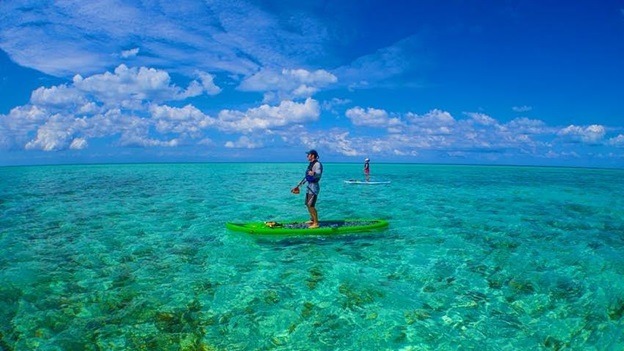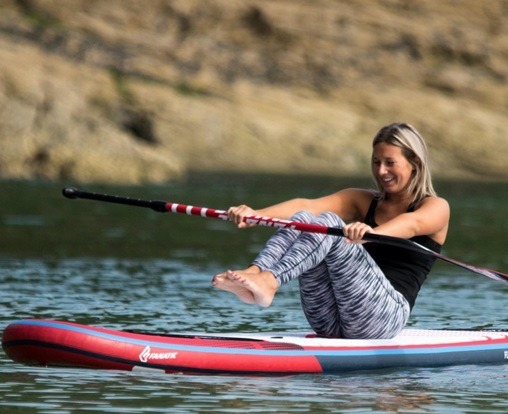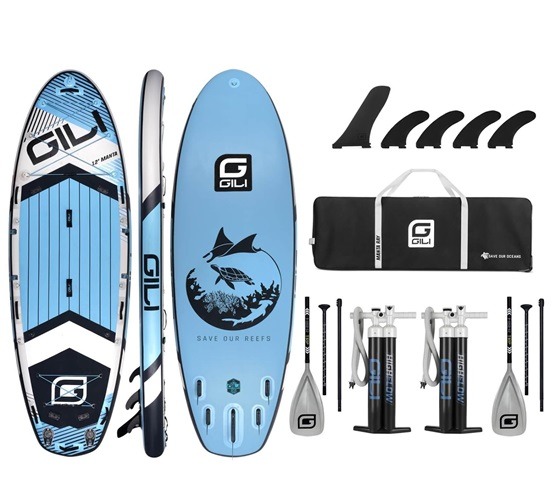Stand-up paddleboarding (SUP) tours usually involve long-distance paddling trips, typically covering remote and difficult locales. Such SUP tours are extremely popular among adventure-seekers in the US (and around the world).
But planning and executing an adventurous, long-distance SUP tour is no easy task. It requires lots of preparation, training, and forethought. To successfully plan an SUP tour, you need to know your own limits as well as the capacity of your chosen paddleboard. This will help you gauge how much paddling you can expect to do at a time, and how long you will need to cover a certain distance.
Being on a paddleboard for hours on end – never touching land until it is time to set up camp in the evening – can be a daunting task. It is not for everybody. But if you are one of the adventurous souls who would like to give long-distance SUP tours a try, then you must prepare for it properly.
First, you should do your research and learn as much as you can about the potential problems of paddling for long periods of time. This will help you let go of all romanticized notions of adventure, allowing you to decide whether SUP touring is something you really want to try, despite all the potential hardships.
The Problem of Land-Sickness
The first potential issue you will face is a mild case of land-sickness, when you finally get off your paddleboard after a day of traversing the waves. Land-sickness – also known as the ‘sickness of disembarkment’ – occurs when your feet touch land after spending a long time paddling on the surface of the water.
Your legs will get used to the motion of the water, and will carry it onto dry land. As a result, you might have some difficulty finding your balance on land. Swaying, dizziness, disorientation, and an inability to balance are some common symptoms of land-sickness.
To avoid an extreme case of land-sickness, you will need extensive training before you begin your SUP tour. Not only will you have to get used to spending long hours on the water, you will also have to acclimatize yourself to the feeling of disorientation that comes with returning to solid ground after a long SUP session.
The Importance of Training
While on an SUP tour, you will have to spend prolonged periods of time on the water. This can be a lot of fun, but it can also take its toll on the body. Maintaining your balance on the floating paddleboard – for hours on end – will put enormous strain on your legs.
The endless paddling will also put pressure on your arms and upper body. Blisters might form on your palms, making it painful to hold the paddle the next day. Finally, the extended periods of isolation – when you’re alone in the sea with your paddleboard – might affect your mental health, if you’re not well prepared.
Becoming Comfortable with the Equipment
These are the reasons why you need to train yourself well in advance, if you’re planning a long SUP tour. You need to train both on the water and on land. But most importantly, you need to get familiar with your paddleboard, ankle leash, adjustable paddles, and all other SUP equipment. These pieces of equipment will help keep you safe and comfortable out in the water.
To become truly comfortable with the SUP equipment, you need to start using them extensively at every opportunity. Drive out to your local beach or lake whenever you have some spare time. Spend as many hours as you can on your paddleboard, regardless of the weather conditions.
If you only go paddleboarding when the wind is mild and the water calm, you won’t be prepared for the rough swells and strong winds that might assault you during your long SUP tour. Paddling in rough, windy conditions will train your body and mind to be resilient in every environment.
This is extremely important for long SUP tours. In some places (and during certain times of the year), the weather can change sharply from one hour to the next. So you will have to know how to properly use the SUP equipment to navigate all types of weather conditions.
Land Based Training
To go paddleboarding for hours on end, with no breaks in-between, you will need to build up the strength in your core muscles. Building up the muscles of your arms and legs might also help you during the planned SUP tour.
This can be achieved through regular, land-based exercises, like the ones you do at the gym. Crunches, planks, burpees, and flutter kicks can all help get your abdominal muscles in shape. You can try some chinups, hammer curls, squats, lunges, and deadlifts to strengthen your arms and legs.
Mental Resilience
The importance of psychological strength and resilience cannot be overstated, when it comes to long-distance SUP tours. If you go on a weeks-long SUP tour, then you will inevitably have to deal with bad weather and choppy waters at some point. Rain, lightning, and large swells are some of the issues you might have to endure, while navigating rough waters on your paddleboard.
Hence, proper mental preparation is extremely important, before you set out on such a trip. You have to train your mind to endure stress, isolation, and uncertainty without being overwhelmed by anxiety. Losing your calm out in the seas can be a dangerous thing, so you must do everything you can to prevent that from happening.
Safe Travels
The average paddler can travel at a speed of about 3 to 4 km/h, under normal conditions. During a long SUP tour, however, your speed will be affected by the type of paddleboard you are using, the weather conditions in your location, and how much rest you had the previous night.
In general, you can expect to cover a distance of 20 to 25 kilometers over the course of a whole day, if you’re using a sturdy and well-designed paddleboard. For extra safety, factor in some of the unpredictable natural elements, such as the speed and direction of the wind as well as the strength of the currents.
Whatever you do, be sure to invest in a reliable and high-quality SUP kit before setting out on your long-distance paddleboarding adventure.
Source: Paddleboards.com




